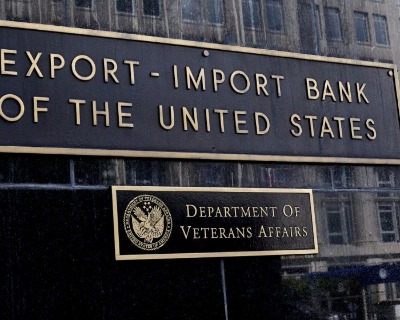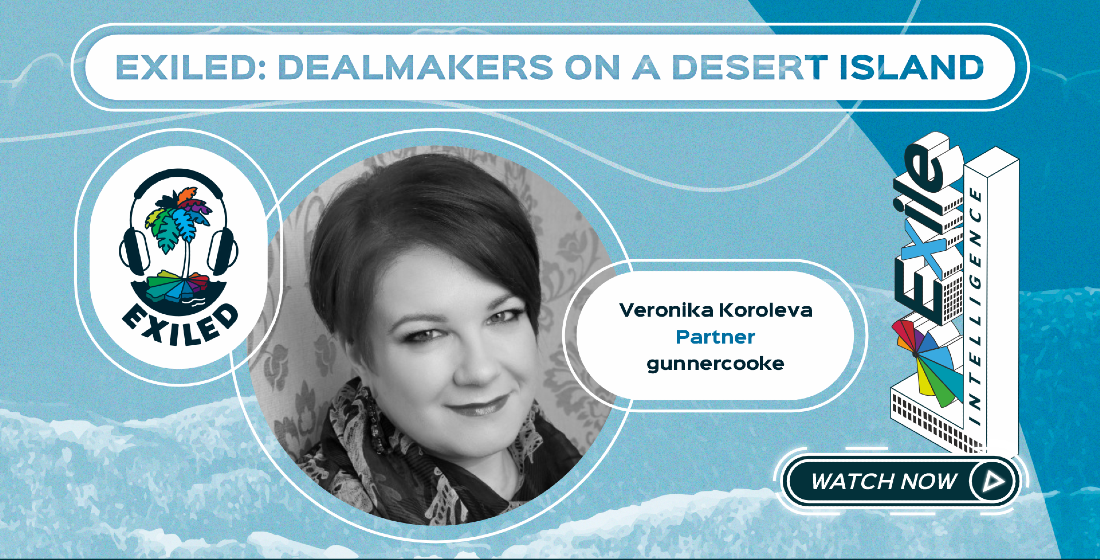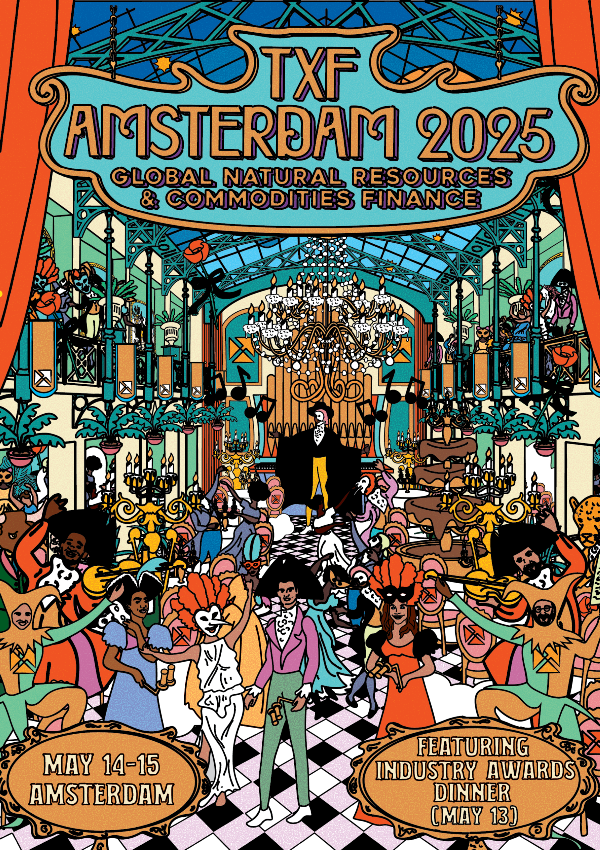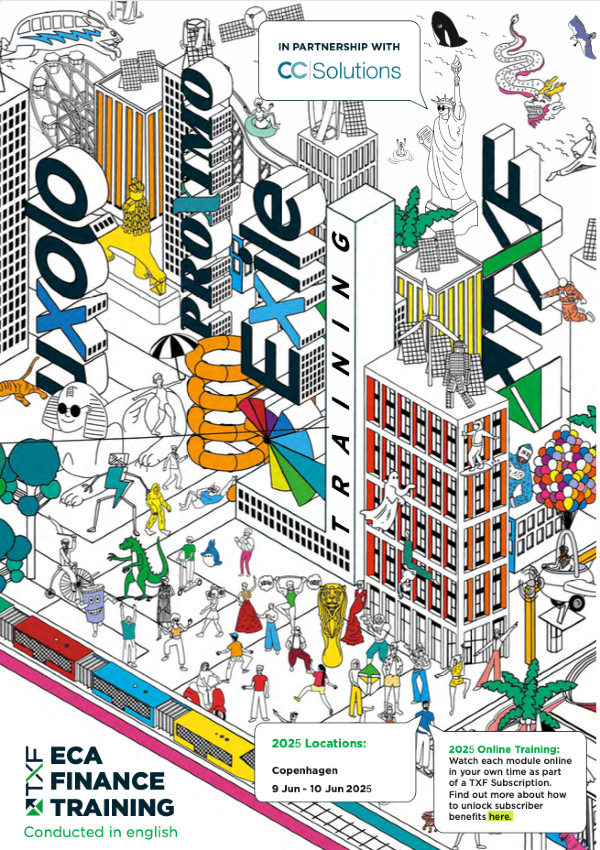US Ex-Im: Rethinking an agency
The US Ex-Im political quagmire continues. So Michael Whalen, managing director at Berkeley Group and former vice president of structured finance at US Ex-Im, asks what a new US export finance agency vision might look like.

US Ex-Im Bank, one of Washington’s most beleaguered federal agencies is rapidly approaching the third anniversary of its stagnation – first by a lapse in its congressional reauthorisation and later by its lack of a board quorum. But Ex-Im Bank’s extended stint in its political quagmire isn’t the only source of stasis – arguments about Ex-Im Bank have become stale. To a large extent, they are even detached from the reality of American export competitiveness.
Ex-Im Bank’s critics spent significant political energy taking down a commercially oriented agency on dubious claims of cronyism and corruption. The attacks – premised on making the bank a sacrificial offering against corporate welfare – were well out of proportion to bank’s narrow scope. At its peak following the Great Recession in 2012, Ex-Im Bank never represented more than 5% of total U.S. Federal credit guarantees and direct loan disbursements (more than 80% goes to housing and student loans even excluding the giant Fannie Mae, Freddie Mac and Ginnie Mae programmes). In response, the bank’s supporters responded with heroic efforts – including a rarely used bipartisan discharge petition to unstick the bank’s reauthorisation. But neither side asked whether the 84-year old agency is still fit to go out there and mix it up with its hard-charging global competitors.
Indeed, if the Trump administration’s disruptive tendencies held promise, for Ex-Im Bank it would have been to push a new vision, perhaps even a radical one, of what a government-supported export credit programme should be in the twenty-first century.
Does it comport with the modern reality of America’s position in global trade — now technology- and service-focused instead of heavy manufacturing? How should Ex-Im Bank counter the Chinese projection of economic power, which continues to accumulate at a rapid pace as America cedes its trade leadership role?
So, what would a new U.S. export finance agency vision look like? Let’s call this entity “New Bank” and look at what a serious agenda might look like:
Public Mission, Private Means
Does Ex-Im Bank need to be government owned?
Ex-Im Bank has no regulatory function, but it does have a substantial commercial nexus that can be well valued and operated in the private sector. It’s notable that not all of ExIm Bank’s peer export credit agencies are government entities. In Germany and the Netherlands, private entities operate the government export credit assistance schemes. Rather than letting the current Ex-Im Bank wither into oblivion, why not sell its assets and migrate its operations to the private sector?
This move would reframe the debate. Victory could be claimed both by those seeking to demonstrate that it is actually possible to eliminate a Federal agency and by those promoting a U.S. government role in competitive financial assistance for exports. A competition for both ideas and capital for the new entity would allow market input on how it would be formed to provide the highest value to the taxpayer and lowest level of required market intervention by the government.
New Bank would need to be designed carefully for it to perform its role of credit enhancement efficiently. Instead of being a yet another government agency, New Bank might instead be granted only supplemental capital support from the U.S. government. It could be supported via Federal reinsurance, or specific criteria could be established in which direct or contingent U.S. government guarantee authority for transactions can be tapped.
A push to privatize a re-energised New Bank would be a double winner for the administration. It provides a path for the Trump administration to reframe an awkward conversation about why it’s willing to re-trade longstanding multilateral trade agreements to address U.S. trade deficits but seemingly is unable to solve the Ex-Im Bank impasse.
Sharing is Caring
Ex-Im Bank’s biggest products have been 100% guarantees or direct loans. Exporters and the borrowers buying U.S. products like this: the more risk taken by the U.S. government the less the frictional cost of securing other direct risk participants.
In other words, Ex-Im Bank typically reaches for the sledgehammer when in many cases a scalpel could be a superior instrument. Rather than narrowly addressing the specific risks limiting the financing of an export, Ex-Im Bank generally takes the entirety of the credit risk on its portion of a financing.
It’s not clear this bear hug of risk is always required. Indeed, the trend among development banks has been to move toward partial risk or partial credit support mechanisms rather than comprehensive guarantees.
A New Bank could focus on channeling its support via partial risk products that address gaps in market appetites for transaction risks such as completion or ramp-up risks. In other situations, New Bank support could provide liquidity assistance to mitigate revenue volatility for activities that generate U.S. exports. The New Bank might seek to reinsure private sector risk providers in a transaction. It could structure transactions in which it fronts for private sector financial institutions (either lenders or insurers), placing some portion of the risk exposure with these participants while providing an overall umbrella facility.
In the face of fierce global competition, some exporters may be disconcerted with such changes on the grounds that export financing costs may increase if a New Bank is charged to distribute more risk than the old Ex-Im Bank’s 100% “risk-on” posture. This is short sighted. Three years and counting of no bank is far worse.
Tied to the Past
Ex-Im Bank is pretty old school. It operates narrowly within the OECD rulebook on export-tied credit support. It also sets a high bar on what constitutes an eligible U.S. export and provides medium- and long-term finance in linear proportion to those exports deemed eligible.
Other developed nations have adopted a much broader perspective of national benefit in a completive global landscape. In the case of Japan and South Korea, tied export financing is only a fraction of their export credit agencies’ activities (in 2016 as much as 85% of JBIC and KEXIM volume was outside the OECD Arrangement according to Ex-Im Bank estimates). Most of these agencies’ financing activities are the result of a broader focus on national economic and commercial interests.
Ex-Im Bank’s rules significantly limit its impact in supporting many of America’s best economic value added in technological goods and services where they don’t meet the agency’s content rules. In an American economy that continues to gravitate toward complex supply chains and services rather than heavy manufacturing, Ex-Im Bank is on the sidelines.
How can this be addressed? One idea would be to have New Bank support be linked to direct U.S. job compacts with exporters seeking high levels of credit assistance on an untied basis. Perhaps a privatized New Bank would operate a market window program (i.e., explicitly commercial terms) for untied situations. Or, perhaps a broader mission of national economic benefit could be considered, such as …
Infrastructure Starts at Home
Ex-Im Bank’s largest loans and guarantees go to overseas buyers of U.S. capital goods, frequently commercial aircraft and heavy equipment. Although its charter allows it to “facilitate” U.S. exports, Ex-Im Bank hasn’t financed domestic export infrastructure (for example, U.S. ports and airports) or provided long-term support to U.S. commodity exporters.
The former would seem to be complementary with the bipartisan focus on infrastructure development. The latter is key given the Trump administration’s focus on the U.S. becoming a dominant energy exporter, particularly with abundant natural gas being available to liquefy and export globally.
New Bank could address both.
Allowing for the availability of existing private capital markets, New Bank could offer a market window for export-oriented infrastructure. In fact, this is a good example of where a broader credit toolset would be necessary to carefully address market.
The same is true for high value commodity exports, especially for those facing particularly challenging market circumstances such as the liquefied natural gas (LNG) trade. Here a number of potential U.S. exporters are stymied in trying to structure project financings around energy importers with lower credit ratings.
Rather than directly funding these U.S. LNG facilities, New Bank could be charged with mitigating or offsetting risks associated with long-term purchase arrangements with these new gas buyers. Not only would this support U.S. jobs, but such an initiative could assist other nations in their efforts to migrate to more economical and cleaner fuels.
If you can’t beat ‘em, try again
Many U.S. exporters have moved on. Sadly for their U.S. employees, other countries’ export credit agencies eagerly have filled the void created by Ex-Im Bank’s absence. Of course, the agencies take up the slack with the understanding that this will shift economic activity from the United States into their own countries.
This may all be overshadowed by the gravitational shift being orchestrated by China. China’s existing export promotion programmes — through China Eximbank, Sinosure and China Development Bank, are massive and growing. And these institutions operate entirely outside the OECD “gentleman’s agreement.” These export promotion schemes, laced with frequent use of concessional financing terms, are now joined by the launch of Chinese-centered multilateral development financing. The new Beijing-headquartered Asian Infrastructure and Investment Bank has attracted 84 approved members (conspicuously not the United States) at it seeks to provide a Chinese solution to Asian infrastructure gaps with $100 billion in funding. China’s One Belt One Road Initiative contemplates a program twelve times the size the U.S.-led Marshall Plan after World War II to resurrect the Silk Road routes present when China was last the dominant global trading power. China has committed $40 billion of investment through its Silk Road Fund and allocated another $100 billion of investment through the New Development Bank, targeted at BRICS countries.
The answer to a radically changed landscape and an even more rigorously competitive environment is not for the United States to skulk away from its previous global leadership role in trade, exports and economic development. It seems unlikely that U.S. political consensus would support an effort to match the Chinese-style international funding spree like-for-like. But a new vision — one that breaks from the traditional export credit agency model and is reshaped with private-sector interaction at its core and blended risk solutions in its tool belt — could be part of a response centered around an alternative approach to economic statecraft.
Perhaps the U.S. legislative logjam for Ex-Im Bank will be cleared soon. Perhaps exogenous events will cause in a shift in sentiment among the bank’s domestic critics. Or, perhaps with Ex-Im Bank’s next reauthorization appearing just over the horizon in 2019, now is the time to lay the groundwork for a serious discussion of how a New Bank should meet new challenges.





